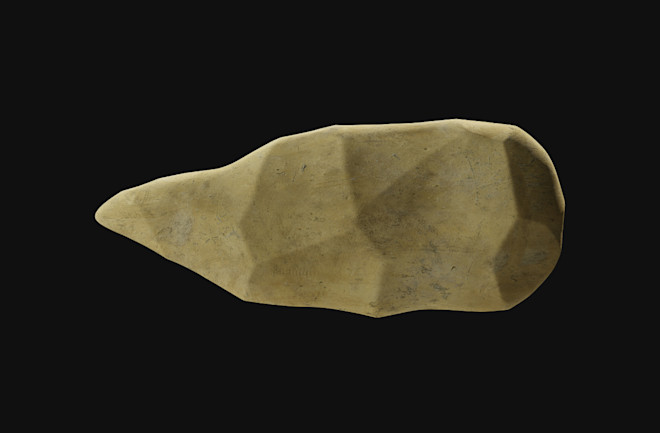Unbelievable! Researchers have uncovered 3-million-year-old tools that redefine human history. Read on to discover how this incredible find is reshaping our understanding of early human technology.
Ancient tools, buried for millions of years in Kenya, may be the oldest example yet of our ancestors’ technological prowess. The tools, recently discvered on the Homa Peninsula in Lake Victoria, are now the earliest known examples of Oldowan technology — stretching its known start date back by as many as 400,000 years.

The Oldowan Toolkit
“[Oldowan] is a real benchmark of our technology,” says paleontologist Rick Potts, the director of the Human Origins Program at the Smithsonian National Museum of Natural History in Washington, D.C., and a co-author of the new study published in Science .
The “Oldowan toolkit” is a term anthropologists use to describe the distinct technology that lasted for millions of years before Homo sapiens ever walked the Earth. These tools usually involved very controlled rock-flaking.
By hitting one stone against another, ancient hominins chipped off sharp, thin slivers, leaving a sharp-edged stone behind that would have been good for chopping or scraping. The slivers could also have been used as sewing materials and other things.

The technology’s name comes from the Olduvai Gorge in Tanzania, where archaeologists discovered ancient hominin bones and tools during several digs beginning in the 1910s. Some of these bones date back to about 2.1 million years ago .
Since then, tools that fall into this categorization have been found widely across Africa and even into Europe and East Asia.
Digging in Nyayanga
The Nyayanga excavation site where the stone tools were found is a lush, tropical place with deep gullies. As these gullies erode, extremely old layers of dirt and sediment — and sometimes ancient fossils and tools — are exposed.
Potts, who has been exploring the area since 1985, says “it’s a ripe area to be making major discoveries.”

More recently, he and his study co-authors found that the 330 stone tools they unearthed at Nyayanga date between 2.58 million and 3 million years ago. That’s hundreds of thousands of years older than the previously oldest known set of Oldowan tools, which were found in Ethiopia.
“We are seeing a real sea change in terms of our understanding,” Potts says.
The site has also revealed 1,776 animal fossils, including those of at least three hippos and antelopes. The bones of two of the hippos show signs of butchery marks, including a cut on the ribs and four parallel marks on a shin bone; some of the antelope bones indicate scraping.
A separate analysis the researchers conducted on stone flakes found in the area shows they were likely used for scraping, cutting and pounding animals and plants. “The surprising find is that that ancient technology was used not just for cutting up animals,” Potts says.
It remains unclear, however, whether these ancient tool-users killed the animals themselves before the butchering, or whether humans simply scavenged cadavers.

Whose Tools Are They?
Similarly, the question of who made these tools in the first place isn’t entirely obvious — though there are a few suspects.
Researchers have long assumed tool use to be limited to the Homo genus. The oldest known fossil depicting this is a 2.8-million-year-old jawbone, known as LD 350-1, found in Ethiopia. That timeline lines up pretty well with the range of tools at Nyayanga.
Read More: When Did Homo Sapiens First Appear?
But perhaps even more compelling is the evidence found at Nyayanga itself, in the form of two molars the team has identified as belonging to Paranthropus . This genus is a close relative of the Homo genus, but some researchers have speculated that, due to their powerful jaws, Paranthropus wouldn’t have needed tools to help break down their food.
“It was basically a chewing machine all by itself,” Potts says of theirjaws, though he believes that discussion is ripe to be revisited based on these latest findings.
Finally, a third possible hominin found roughly around this time is Australopithecus . The best known of these, Lucy, died in Ethiopia and dates roughly to 3.2 million years ago, while the most recent Australopithecus specimensdate to about 2.9 million years ago.
Read More: Lucy’s Demise: What Killed the Most Famous Fossil
Any of these three hominins could have used the stone tools found in Nyayanga. But until more bones are unearthed, it’s difficult to say definitively.